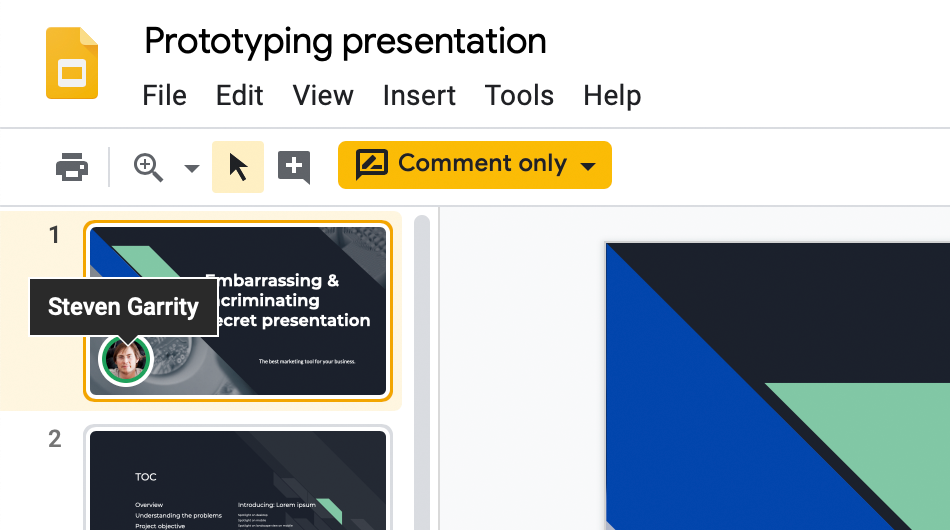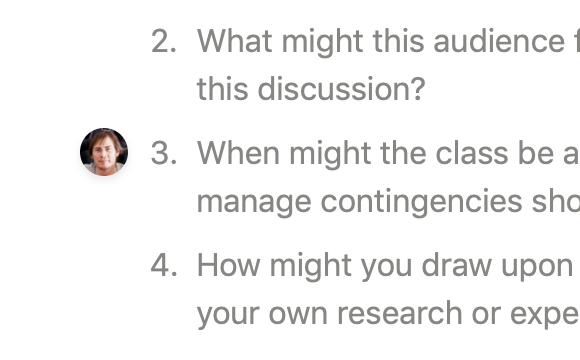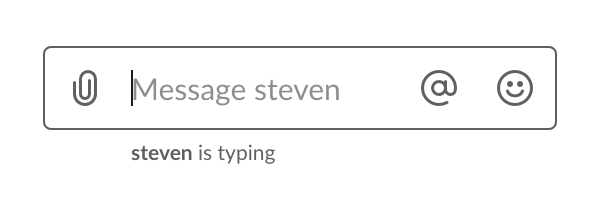Many of us in the technology world are beginning to grapple with the unintended consequences of the platforms and products we’ve been created. I’ve recently noticed a pattern with potential unintended consequences where software products leak information about your presence or actions to others. It may not be fair to use the term “leak”, as it’s intentional on the part of the products, but those using the software may be less aware.
In Google Docs (and Sheets, Slides, Draw, etc.), when you are viewing or editing a document, you can see the names and faces of those who are also viewing in real time.

The notes/wiki system Notion shows a similar name / face of others who are viewing pages.

The Slack group chat app shows others when you’re typing in a channel.

The Figma design tool shows the names (and cursors) of others viewing a shared document.

These indications of presence or activity are often helpful. Knowing where a person is focused when you’re working together can be a helpful proxy in lieu of body language. Knowing that someone is typing a response to your question helps make the asynchronous flow of a text-base conversation feel a bit more natural.
These features also have unintended side-effects. In the case of Google Docs, I may want to refer to a shared document, but not broadcast my reading. If you have a difficult situation with a co-worker and privately look up an internal company policy to see how best to address it, you probably don’t want to ‘run into’ that same co-worker in the “How to deal with jerks at work” Google Doc.
In the case of Slack’s indication that you’re typing, you may start a typing out a comment and decide the conversation is better off without your input. Only now, everyone knows you’re there – reading, and is wondering what you are about to say. By not saying anything explicit, you’ve still communicated something to the group (I was going to speak, but decided not to, I’m about to speak, My cat is walking across my keyboard).
It’s always easier to point out the problems with complex systems like these than it is to recognize what they do well. Slack made an improvement to allow you to preview a channel (a discussion room) without ‘joining’ (joining and leaving Slack channels is announced to those in the channel).
Before the change to allow a ‘silent’ preview of a channel, it was like you had to jump into a room full of people, announce your presence, see that you didn’t want to be there, and announce your departure.
Even now, there’s no way to silently leave a Slack channel. It is helpful to know when others leave a channel, but it also makes it socially difficult to leave channels. “Steven has left the #people-who-do-not-hate-dolphins channel” is a not a good look.
I’d like to be able to provide some concentrated rules-of-thumb for these situations, but they’re complex. These are the best conclusions I’ve been able to drawn so far:
- Let people know if, how, and when your software exposes a person’s activity or presence to others.
- Allow people to opt-out of features that broadcast their presence or activity.
Slack can be configured to not show the “… has joined/left…” messages, with the caveat that they can’t be turned off for private channels.
Ah, that’s good to know. In general, I think the joined/left messages are valuable. I can imagine a way to be prompted when leaving a channel to optionally leave a reason for leaving (“I’m done on this project for now – let me know if you need my help again”). It’s a bit like standing up and leaving an actual room – there are times when it’s fine, and times when it warrants a comment.